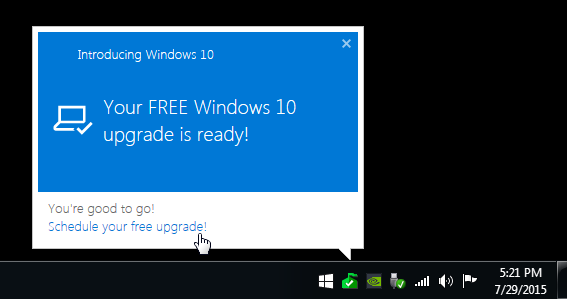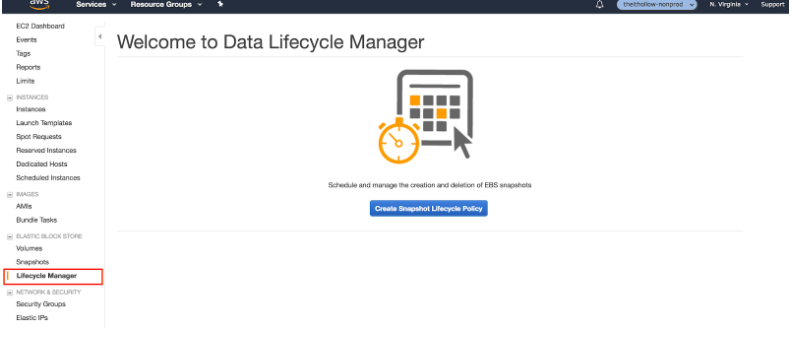aNewDomain — If you have a valid copy of Windows 8.1, you’ve probably already seen the message offering you a free upgrade to Windows 10. We showed you how to upgrade your Windows 7 computer to Windows 10 last week. But what if you’re running Windows 8.1? Check out my How To gallery below, follow the instructions and this upgrade will soon be behind you.
Important Note: This will perform an in-place upgrade of your OS, and while all of your photos, music, documents and other files should transfer without any problem, make sure that all your important data is backed up before starting. Also, create a USB Recovery Drive so you can boot from it and restore your system back to Windows 8.1 just in case something goes awry.
How to Upgrade Windows 8.1 to Windows 10
The first thing worth noting is that while the upgrade shows up in Settings > Windows Update, you have to use the desktop version of Windows Update. If you try to use the modern Settings app, you’ll see the message shown below.

To open the desktop version of Windows Update, use the keyboard shortcut Windows Key+X or right-click the Start button and select Control Panel from the hidden power user menu.
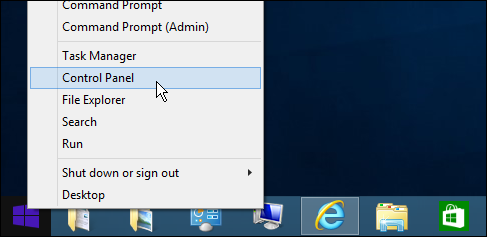
Open the desktop version of Control Panel and select Windows Update.

There you will see the following message letting you know your Windows 10 upgrade is ready. Click Get started.
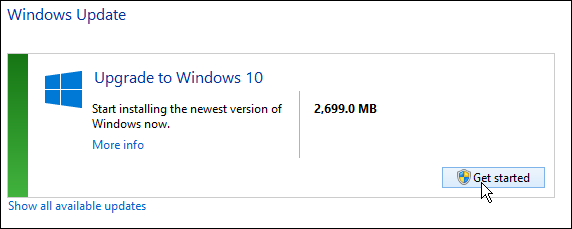
Next you’ll (of course) agree to the Microsoft Software License Terms. Click Accept.
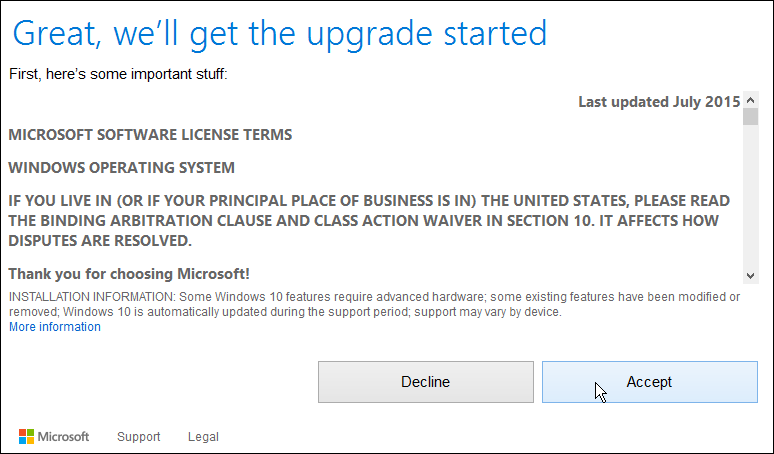
Now you’re ready to kick the process off … click Start the upgrade now.
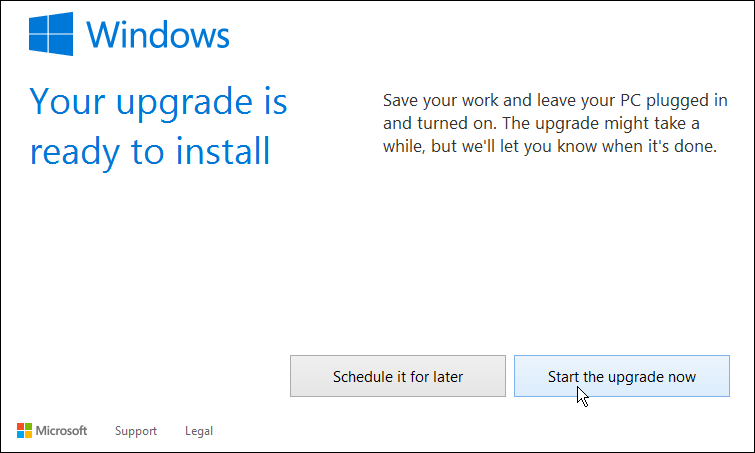
If you want to schedule the update for another time — like when you’re at work, or sleeping — you’ll only be allotted a three day period to install. Also, if you decide to schedule the upgrade, remember to keep your PC on and plugged into a power source during those hours.
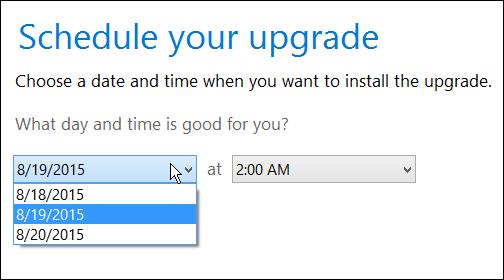
When the upgrade starts, grab your mobile device and play some Candy Crush (or whatever your favorite game is) because the process can take quite a while. The amount of time it takes will vary between systems.
You’ll get the following screen letting you know Windows 10 is installing, and your PC will restart several times throughout the process. If you’re the obsessive type who will watch the progress no matter what, don’t worry if it seems stuck at a certain percentage. It’s working. Just let Windows do it’s thing.
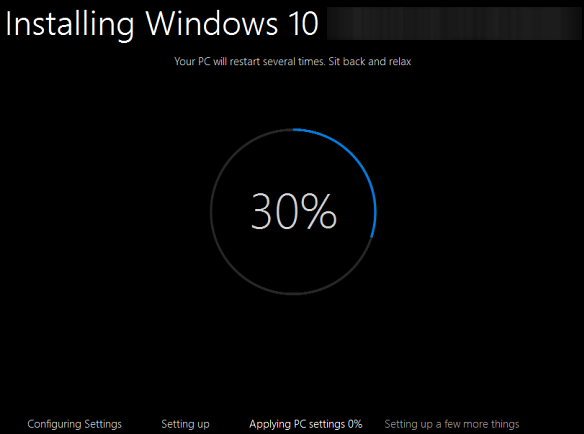
To get Windows 10 up and running quickly, select Express Settings. If there are other settings you want to change (particularly privacy ones), you can always do it after the initial installation.
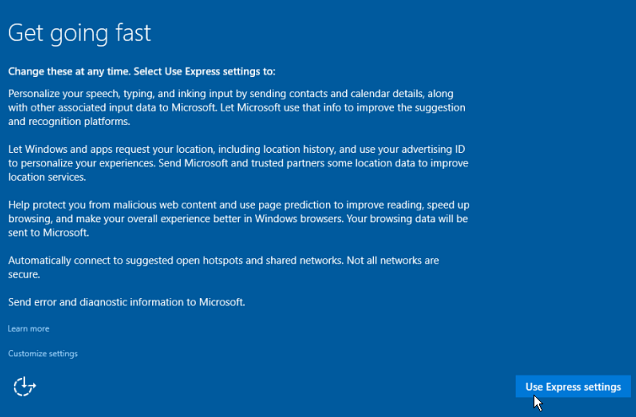
The setup process will also tell you about new built-in Windows apps, like Groove Music, Photos, the new Edge Browser and the digital assistant Cortana. After browsing through those screens you’ll see the newly designed login screen. Type in the password for your Microsoft account.
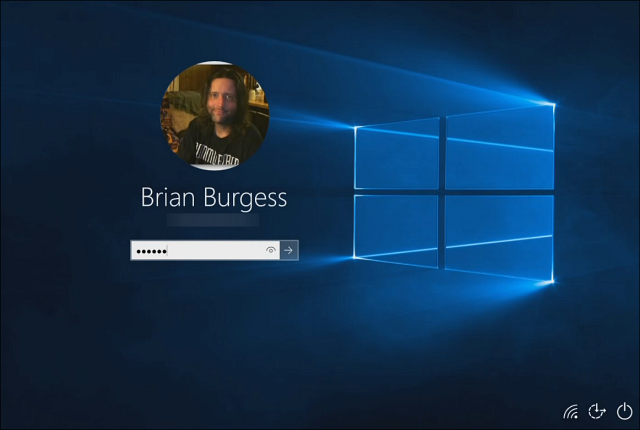
That’s it! You’re ready to start rocking Windows 10!
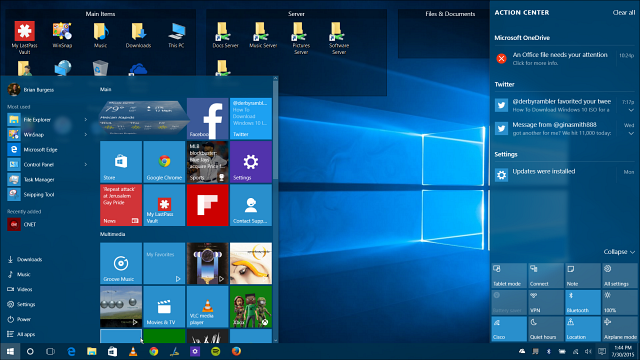
Run Windows update manually, too.
While Windows security and stability updates will be downloaded and installed automatically, you should get ahead of the game and run Windows Update manually. Not only will you have important security and stability patches up-to-date, but you’ll also get the latest drivers for your computer’s hardware.
To do this, go to Settings > Updates & Security > Windows Update and click Check for updates.

Still not sure if you want to upgrade? Check out this aNewDomain article “10 Reasons to Upgrade to Windows 10.” And check out Sandy Berger’s article on her experience with the upgrade — she says it was “painless.”
Good luck, and let me know if you have any questions in the comments.
For aNewDomain, I’m Brian Burgess.
All screenshots: Brian Burgess

